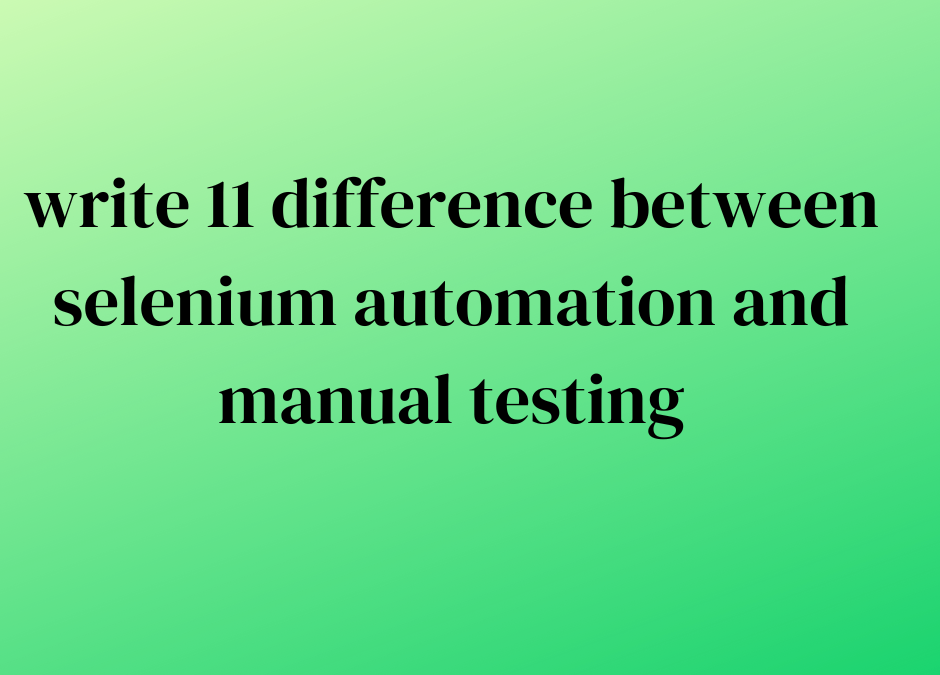Selenium automation and manual testing are two different approaches to software testing. Here are 11 key differences between the two:
- Human Interaction vs. Script Execution:
- Manual Testing: Involves human testers executing test cases and interacting with the application manually.
- Selenium Automation: Uses automated scripts to interact with the application without human intervention.
- Speed and Efficiency:
- Manual Testing: Typically slower and less efficient, especially for repetitive and large-scale testing.
- Selenium Automation: Faster and more efficient, particularly for repetitive and regression testing.
- Repeatability:
- Manual Testing: Prone to human errors and inconsistency in test execution.
- Selenium Automation: Ensures repeatability and consistency in test execution.
- Resource Intensity:
- Manual Testing: Requires a larger team of manual testers.
- Selenium Automation: Requires skilled automation engineers to develop and maintain test scripts.
- Human Judgment vs. Objectivity:
- Manual Testing: Allows testers to apply human judgment, which can be beneficial for exploratory testing.
- Selenium Automation: Provides objective results based on predefined test scripts.we are providining Selenium training in coimbatore Selenium is a popular web automation tool that is used to test web applications. It helps to detect errors and automate repetitive tasks.
- Cost:
- Manual Testing: Lower initial costs but higher long-term costs due to the need for a larger testing team.
- Selenium Automation: Higher initial setup costs but lower long-term costs due to the efficiency of automation.
- Testing Types:
- Manual Testing: Suited for exploratory testing, usability testing, and ad-hoc testing.
- Selenium Automation: Ideal for regression testing, functional testing, and repetitive test cases.
- Maintenance:
- Manual Testing: Test cases are updated manually, and changes can be time-consuming.
- Selenium Automation: Requires script maintenance when application changes, which can also be time-consuming.
- Parallel Testing:
- Manual Testing: Difficult to perform parallel testing on a large scale.
- Selenium Automation: Easily supports parallel testing, saving time and resources.
- Platform and Browser Coverage:
- Manual Testing: Limited coverage due to human limitations.
- Selenium Automation: Can test across a wide range of platforms, browsers, and devices simultaneously.
- Reporting and Traceability:
- Manual Testing: Reporting may vary in quality and detail depending on the tester’s skills.
- Selenium Automation: Generates consistent and structured test reports with traceability to specific test scripts.

